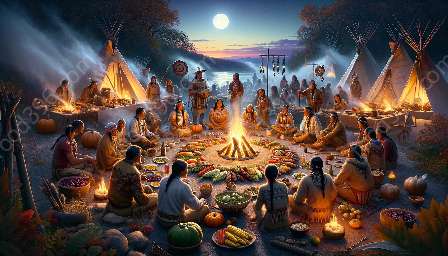Native American cooking has a rich history that has evolved over time, reflecting changes in culture, environment, and interactions with other cultures. From traditional methods rooted in indigenous ingredients to the influence of European colonization and modern innovations, the cuisine of Native American tribes has undergone significant transformations.
The Early History of Native American Cooking
The foundation of Native American cooking dates back thousands of years, with indigenous tribes across the continent developing diverse culinary traditions based on the availability of local ingredients, such as maize, beans, squash, wild game, and fish. Cooking methods varied from tribe to tribe, with the use of earth ovens, clay pots, and traditional smoking and drying techniques. For many Native American communities, food held spiritual significance and was an integral part of cultural rituals and celebrations.
Impact of European Colonization
The arrival of European explorers and settlers in the Americas brought significant changes to Native American cooking. The introduction of new ingredients, including wheat, sugar, dairy products, and livestock, had a profound impact on traditional recipes and cooking practices. Native American tribes incorporated these new elements into their cuisine, resulting in the fusion of indigenous and European culinary traditions.
Forced Assimilation and Loss of Culinary Heritage
The colonization of Native American lands and the forced assimilation of indigenous peoples led to the suppression of traditional cooking methods and the loss of culinary heritage. Native American communities endured significant challenges in preserving their traditional foods and culinary knowledge as a result of government policies and cultural upheaval.
Revival of Native American Cuisine
In recent decades, there has been a growing movement to revitalize and celebrate Native American cooking. Chefs and food activists have been instrumental in reclaiming indigenous ingredients and culinary techniques, sparking a renewed interest in traditional Native American cuisine. These efforts have led to the rediscovery and promotion of ancient cooking methods, such as pit cooking, wild foraging, and the use of native herbs and spices.
Modern Influences and Culinary Innovation
As Native American cuisine continues to evolve, it has embraced modern influences while retaining its cultural roots. Contemporary Native American chefs are exploring innovative ways to interpret traditional dishes, incorporating local and seasonal ingredients to create unique culinary experiences. The fusion of traditional and contemporary elements has contributed to the renaissance of Native American cooking, elevating it to a prominent place in the culinary world.
Diversity of Native American Cooking
It is important to recognize that Native American cooking is incredibly diverse, reflecting the distinct culinary traditions of various tribes and regions. From the seafood-rich dishes of coastal tribes to the hearty stews and breads of the Plains Indians, each community's cuisine tells a unique story shaped by its history, environment, and cultural practices.
Preserving and Honoring Native American Culinary Heritage
Efforts to preserve and honor Native American culinary heritage are ongoing, with initiatives aimed at documenting traditional recipes, promoting sustainable food practices, and supporting indigenous food sovereignty. By preserving the legacy of Native American cooking, future generations can continue to appreciate the richness and diversity of this ancient culinary tradition.

